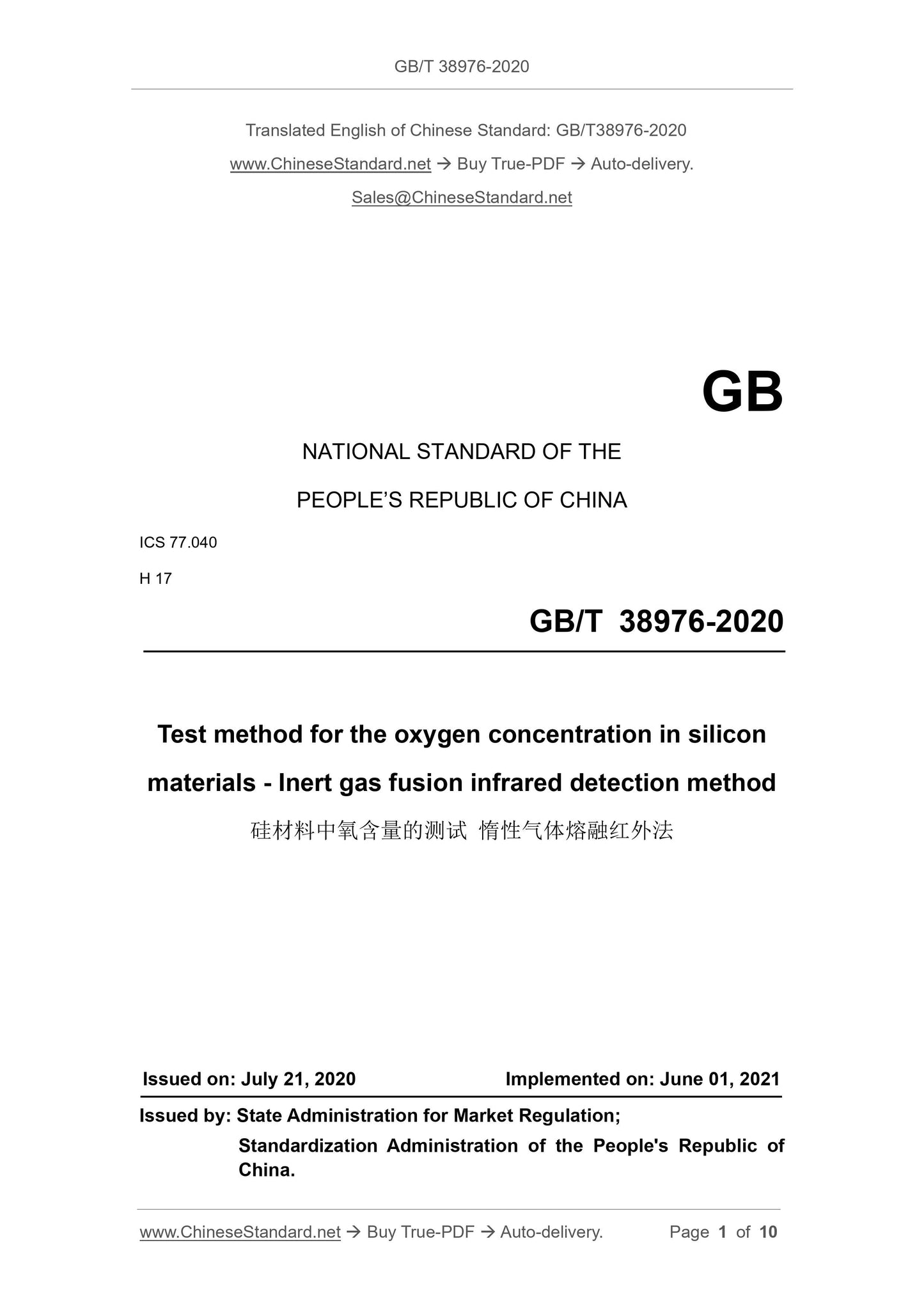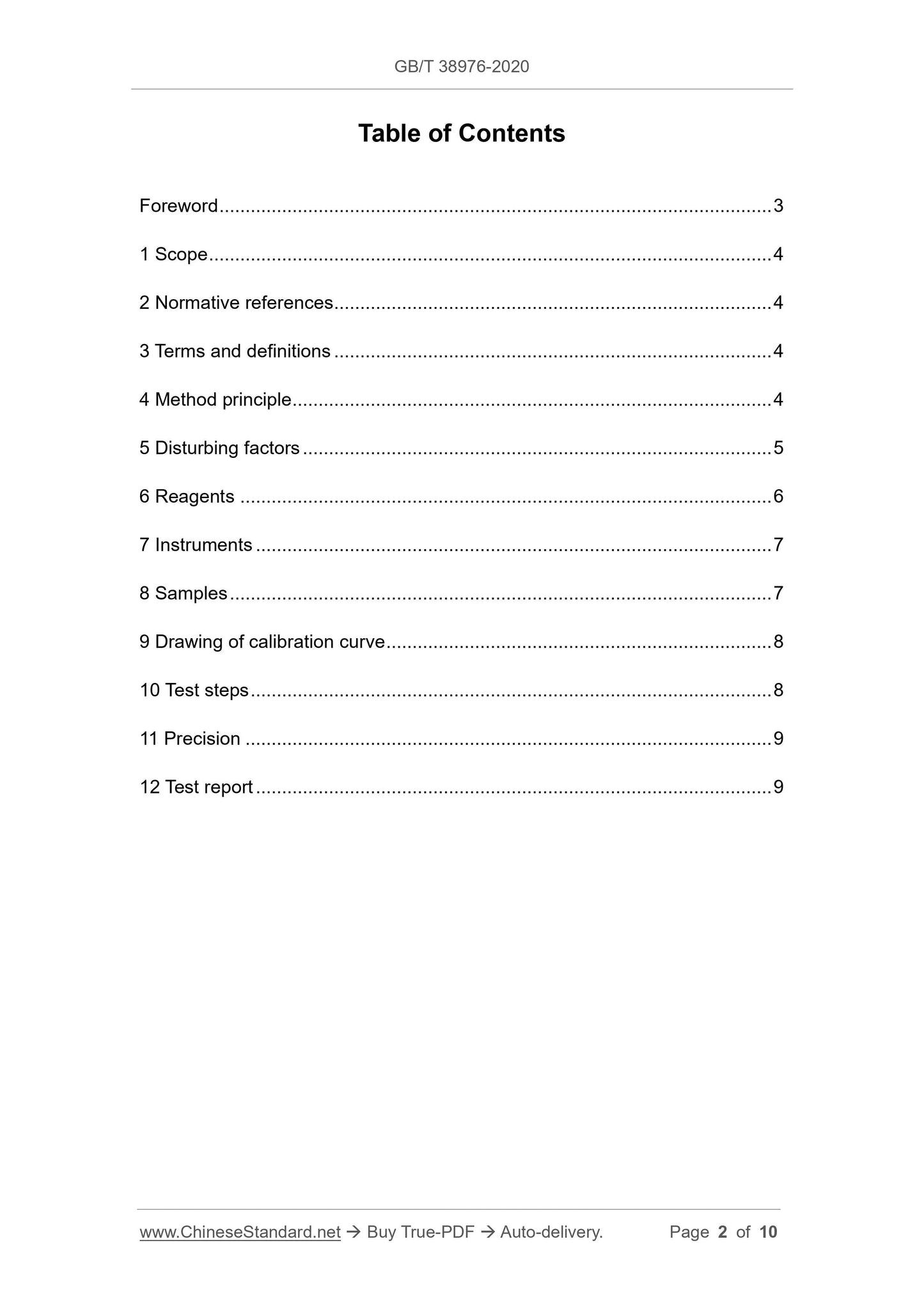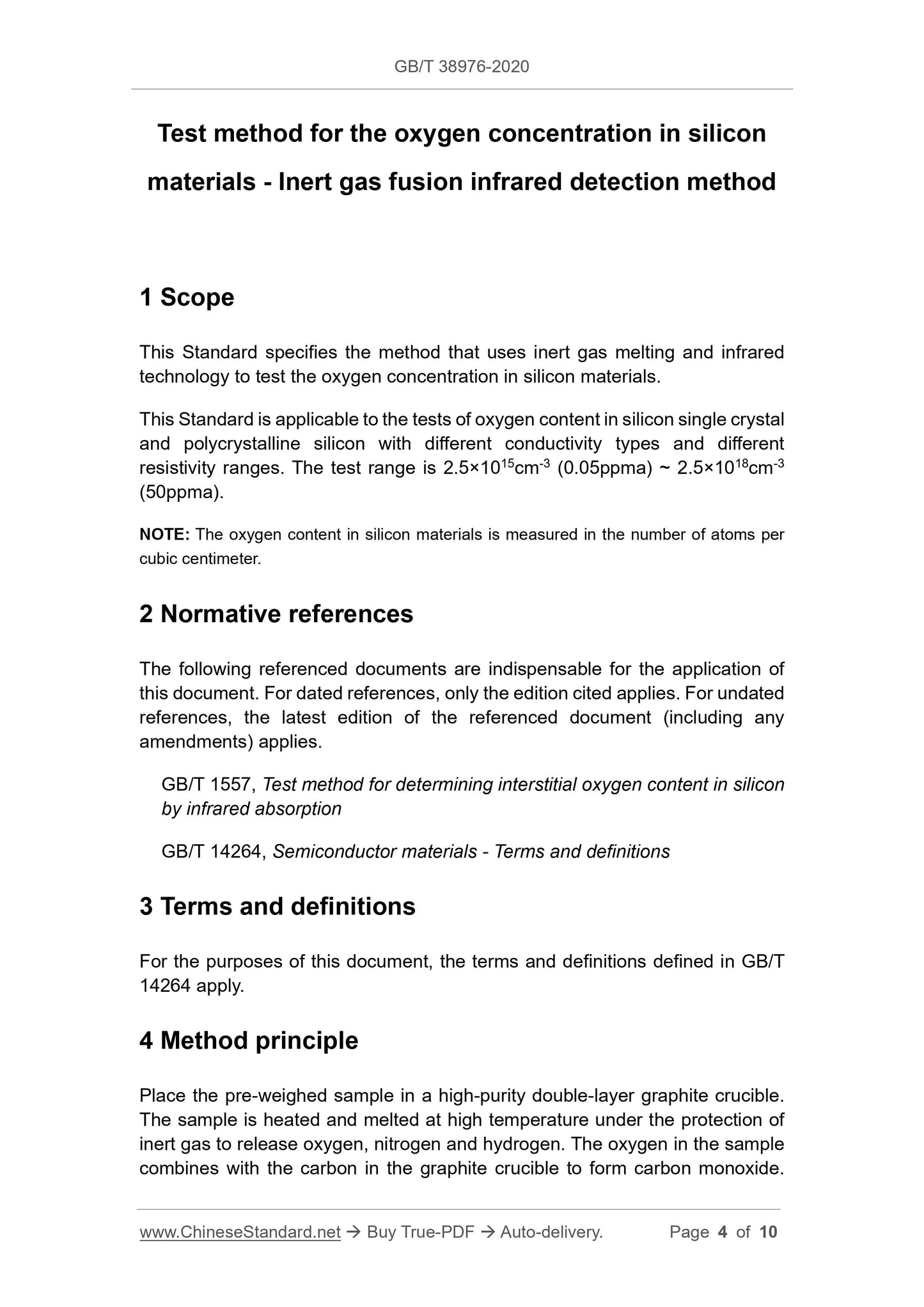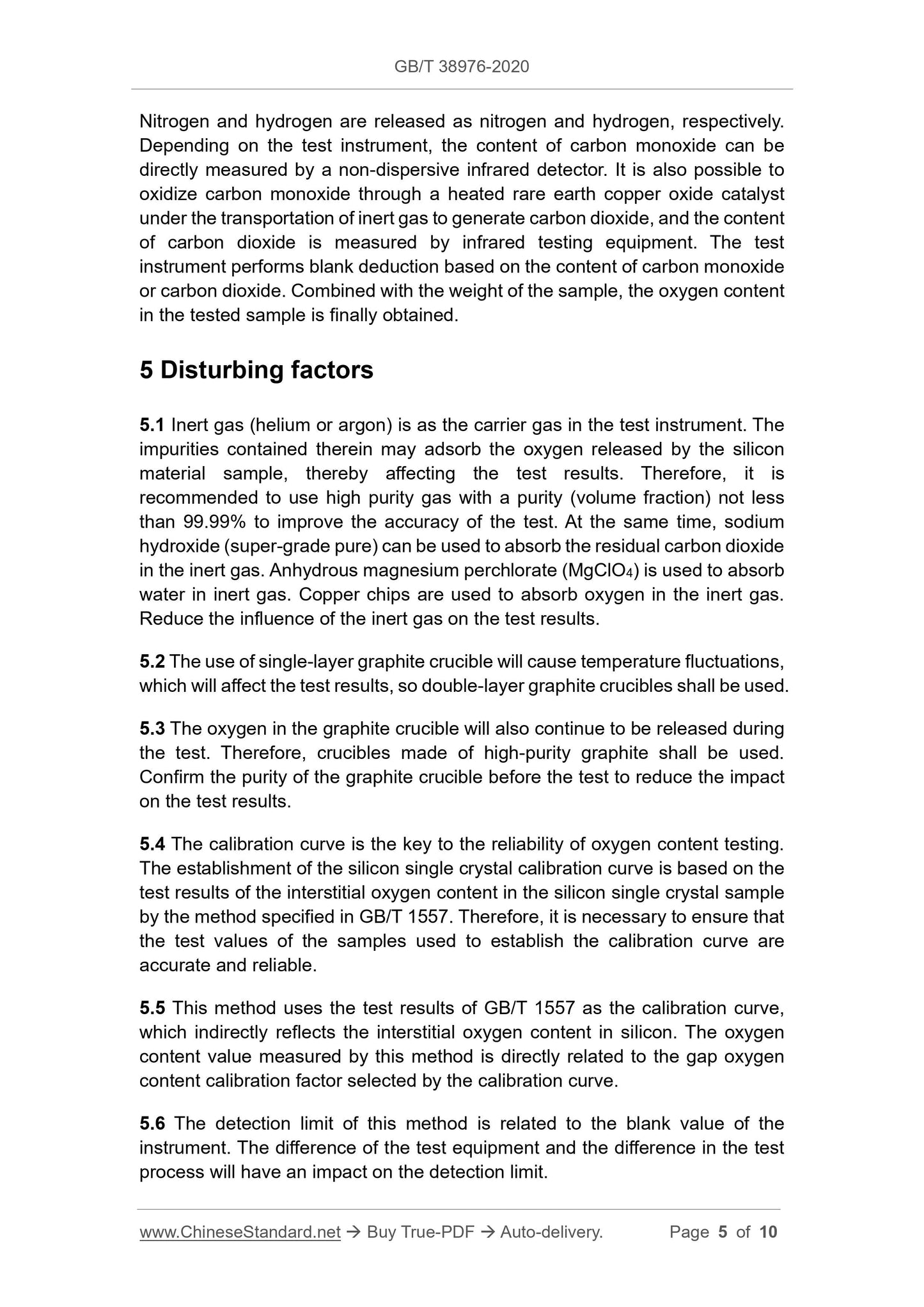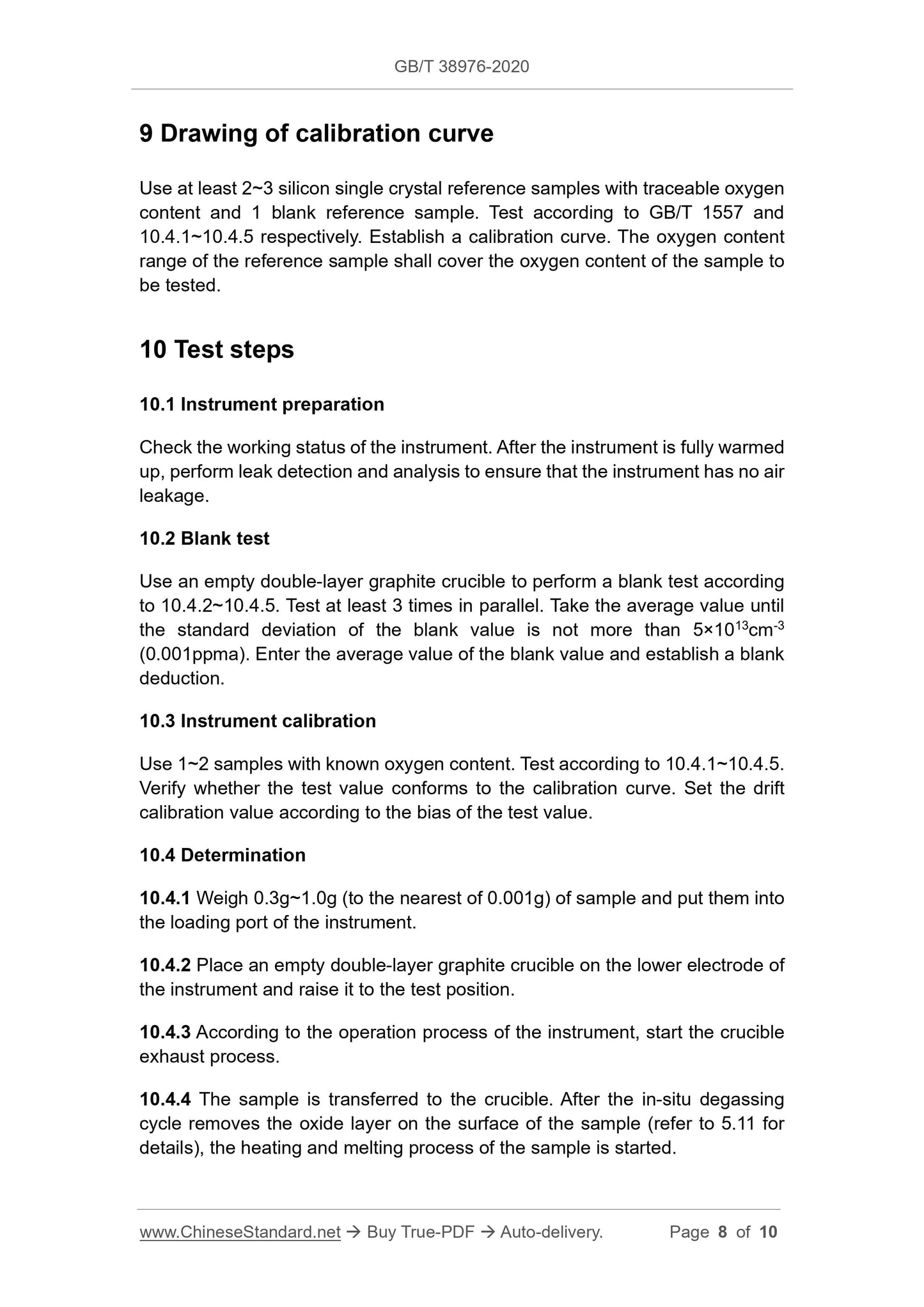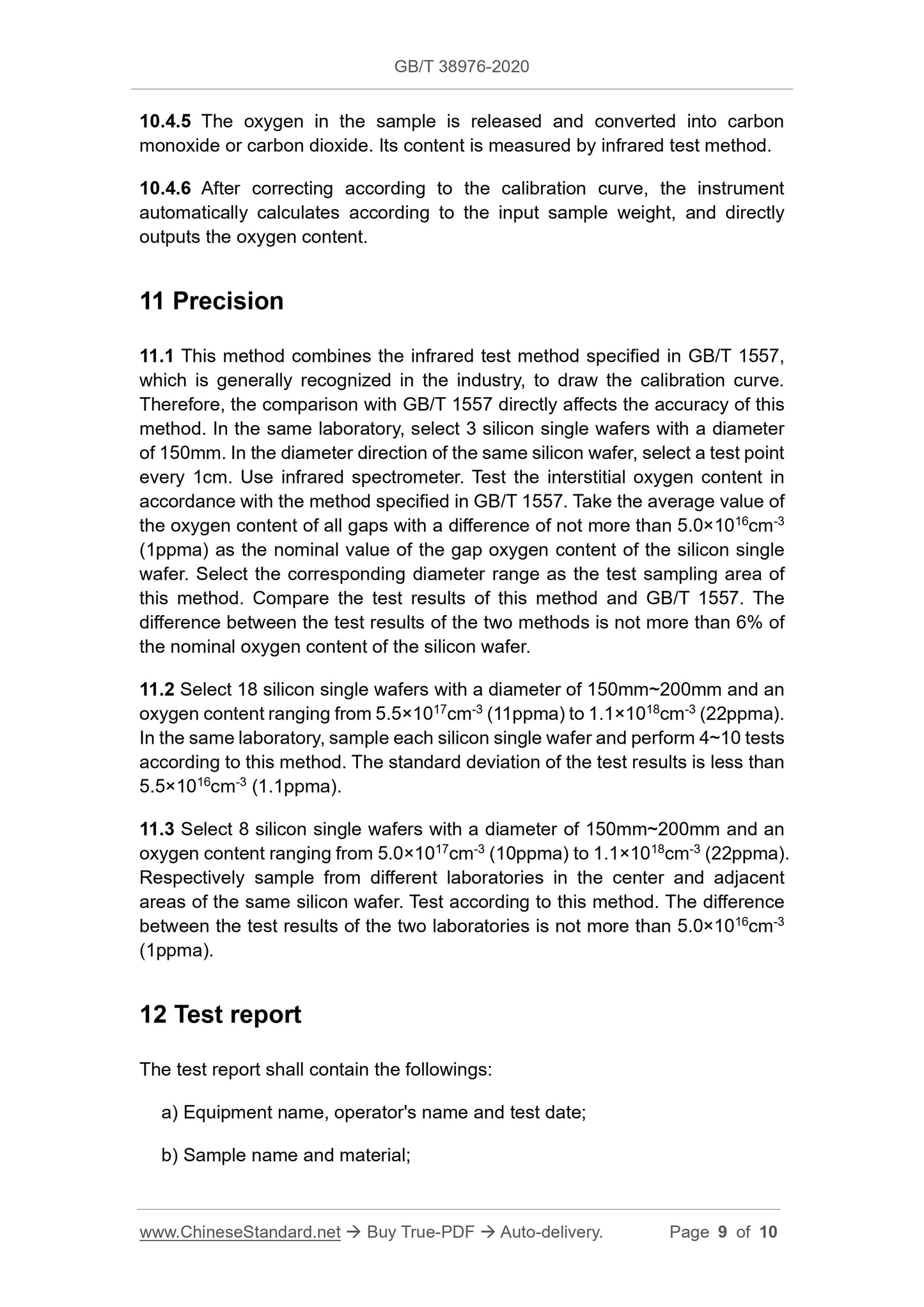1
/
of
6
www.ChineseStandard.us -- Field Test Asia Pte. Ltd.
GB/T 38976-2020 English PDF (GB/T38976-2020)
GB/T 38976-2020 English PDF (GB/T38976-2020)
Regular price
$110.00
Regular price
Sale price
$110.00
Unit price
/
per
Shipping calculated at checkout.
Couldn't load pickup availability
GB/T 38976-2020: Test method for the oxygen concentration in silicon materials - Inert gas fusion infrared detection method
Delivery: 9 seconds. Download (and Email) true-PDF + Invoice.Get Quotation: Click GB/T 38976-2020 (Self-service in 1-minute)
Newer / historical versions: GB/T 38976-2020
Preview True-PDF
Scope
This Standard specifies the method that uses inert gas melting and infraredtechnology to test the oxygen concentration in silicon materials.
This Standard is applicable to the tests of oxygen content in silicon single crystal
and polycrystalline silicon with different conductivity types and different
resistivity ranges. The test range is 2.5×1015cm-3 (0.05ppma) ~ 2.5×1018cm-3
(50ppma).
NOTE: The oxygen content in silicon materials is measured in the number of atoms per
cubic centimeter.
Basic Data
| Standard ID | GB/T 38976-2020 (GB/T38976-2020) |
| Description (Translated English) | Test method for the oxygen concentration in silicon materials - Inert gas fusion infrared detection method |
| Sector / Industry | National Standard (Recommended) |
| Classification of Chinese Standard | H17 |
| Classification of International Standard | 77.040 |
| Word Count Estimation | 6,652 |
| Date of Issue | 2020-07-21 |
| Date of Implementation | 2021-06-01 |
| Issuing agency(ies) | State Administration for Market Regulation, China National Standardization Administration |
Share
